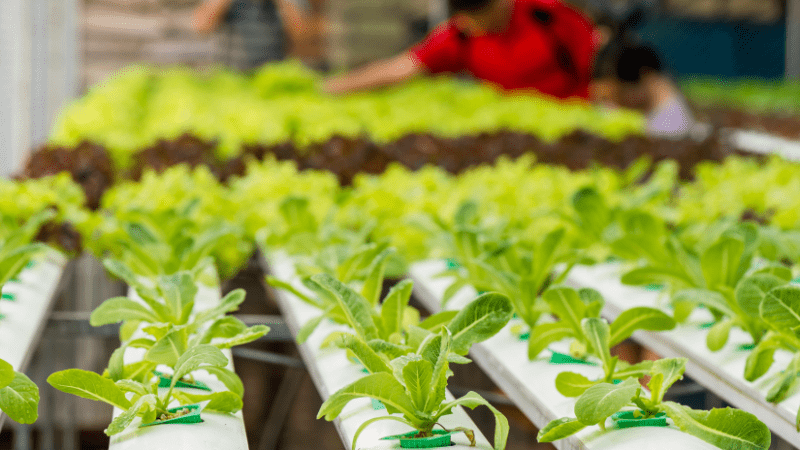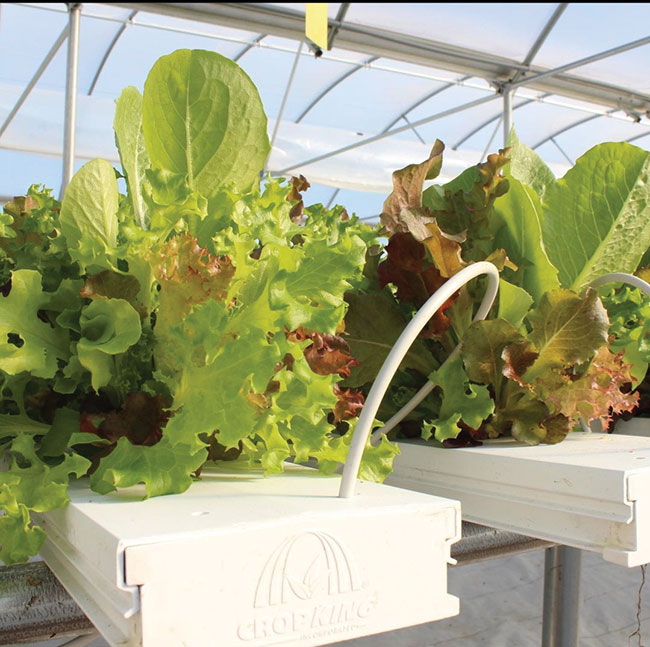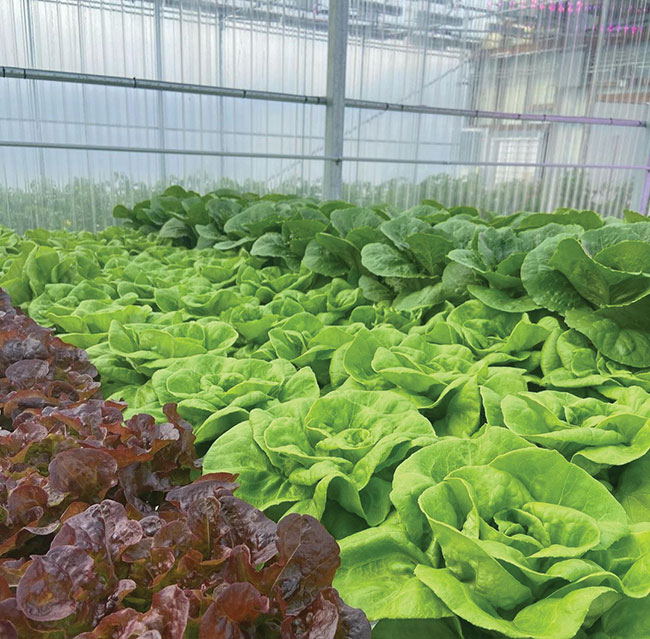
Hand-in-hand with hydroponics
Hydroponics is a way of growing plants without soil, but that doesn’t mean it is all media-less. Media is often used as a way to stabilize plants and provide a place for root development.
THE RIGHT ONE
Physical properties like waterholding capacity, pore space and aeration are some media factors that need to be considered when choosing what’s best for your crops, since growing media can have a big effect on plant growth in a hydroponic system.
Chemical activity is another characteristic to consider. Because roots take up nutrients as ions, the cation exchange capacity (CEC) of the utrient loss in fertilization programs.
Availability of nutrients can also be challenged by pH. Certain plant species require an ideal pH range to effectively take up nutrients through the roots.

Organic versus inorganic media is another consideration because carbon-based components of organic matter will decompose. Too much carbon creates an environment where plants are then competing for nitrogen.
Some hydroponic growing media like coconut fiber, pine bark, rice hulls and sawdust have a short life span. Others like perlite, sand, gravel and lava rock are reusable. All of these options are low cost but come with varying pH and CEC values that need to be accounted for by the grower.
MANAGING MOISTURE AND MEDIA
Moisture balance is crucial to maintaining health throughout your hydroponic system — from the media to the plant’s health and productivity.
“Choose your media wisely based on what your level of control is,” Liam Spenser, director of cultivation at bgood, said. “Don’t run rockwool if you don’t have your environment and irrigation strategy dialed in.
“Don’t be afraid to drive your EC up if necessary as well in your feed; if you don’t have proper irrigation strategy it can help bring your substrate EC up,” Spenser continued. “Your plants will tell you what they need when they need it, again though, many problems go back to the environment both in the room and in the media.”
SUSTAINABILITY
As greenhouse growing has developed across different sectors of the produce category, more public and private investment in research is emerging to support hydroponics companies like BrightFarms and CropKing — where all growing is done for research purposes.
Sustainability and crop cleanliness are crucial elements to our production efforts, Colin Clark, horticulture and technical services at CropKing, said. “Hydroponics allows us to consume less water and nutrients while maximizing our crop health and yield compared to traditional cultivation methods,” Clark said.
“Hydroponics really gives us the ability to produce consistent and reliable crops by fine tuning our nutrient composition and delivery methods, in a much more hands on way than you ever could with a more soil-based system.”

READY TO GROW
Not all media types work for all crops, and not all are suitable for all hydroponic systems.
Make sure you get the fundamentals right. “To be successful at commercial scale, it all comes down to excellence in operational execution — having the right inputs, the right processes and the right unit economics — to make your business successful in the long term,” Matt Lingard, senior vice president of agriculture and science for BrightFarms, said.
Clark suggested answering questions like: What are you going to grow and is there a market for it? Is your source water good for growing crops or will it require heavy filtration? What size hydroponic operation do you plan to start with? How much are you willing to invest and what timeline do you have in mind for ROIs?
Keep things simple and don’t buy into the hype products, and select trusted companies that show integrity in what they represent and have an established history in the market, Clark recommended.

“Always be a student and keep an open ear to ways in which you can improve what you’re doing,” Clark said. He also said to keep efficiency in mind as markets rise and fall; being able to improve your margins will help your business stick around for years to come.
“In contrast with hydroponics, you can run a nearly sterile and inert system with the only inputs being what you provide,” Clark said.
It is a process that should be by the book and predictable. “Measure what goes in, measure what goes out, follow your data and lab analysis and you can run a large volume of plants with relative ease. At the end of the day plants consume nutrients in the same molecular form whether they had to break it down from organic inputs or they were simply provided with the molecules they need, as is the case with hydroponics.”









 Video Library
Video Library 


















